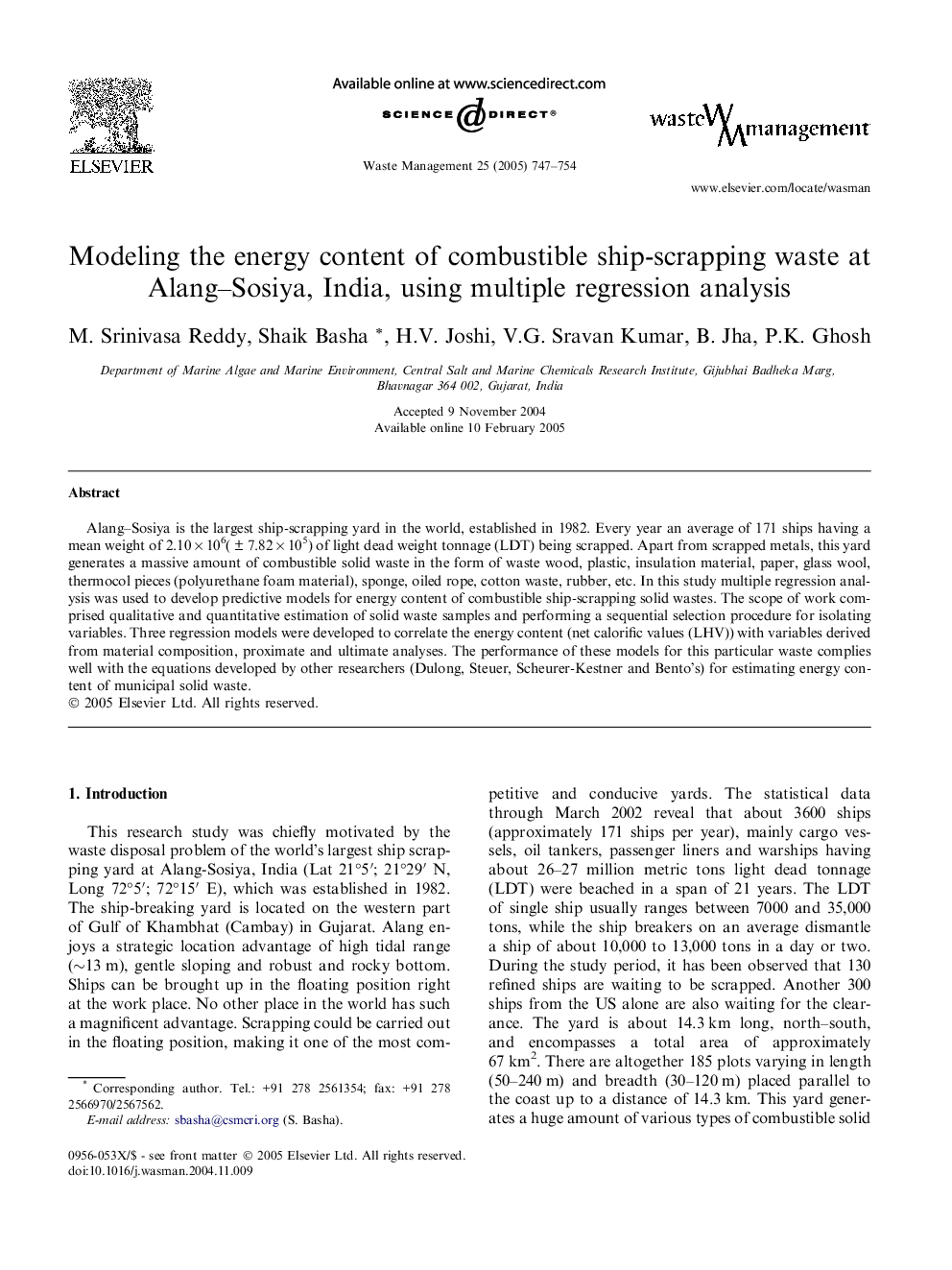| Article ID | Journal | Published Year | Pages | File Type |
|---|---|---|---|---|
| 9465216 | Waste Management | 2005 | 8 Pages |
Abstract
Alang-Sosiya is the largest ship-scrapping yard in the world, established in 1982. Every year an average of 171 ships having a mean weight of 2.10 Ã 106( ± 7.82 Ã 105) of light dead weight tonnage (LDT) being scrapped. Apart from scrapped metals, this yard generates a massive amount of combustible solid waste in the form of waste wood, plastic, insulation material, paper, glass wool, thermocol pieces (polyurethane foam material), sponge, oiled rope, cotton waste, rubber, etc. In this study multiple regression analysis was used to develop predictive models for energy content of combustible ship-scrapping solid wastes. The scope of work comprised qualitative and quantitative estimation of solid waste samples and performing a sequential selection procedure for isolating variables. Three regression models were developed to correlate the energy content (net calorific values (LHV)) with variables derived from material composition, proximate and ultimate analyses. The performance of these models for this particular waste complies well with the equations developed by other researchers (Dulong, Steuer, Scheurer-Kestner and Bento's) for estimating energy content of municipal solid waste.
Related Topics
Physical Sciences and Engineering
Earth and Planetary Sciences
Geotechnical Engineering and Engineering Geology
Authors
M. Srinivasa Reddy, Shaik Basha, H.V. Joshi, V.G. Sravan Kumar, B. Jha, P.K. Ghosh,
